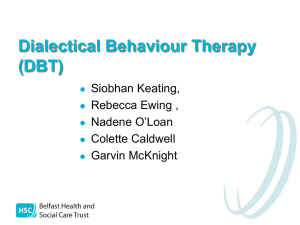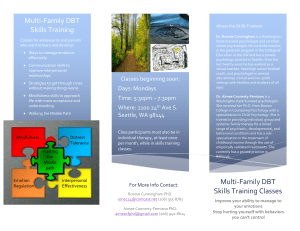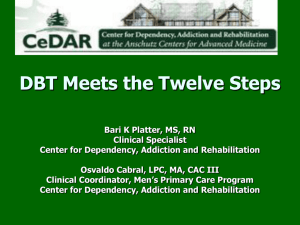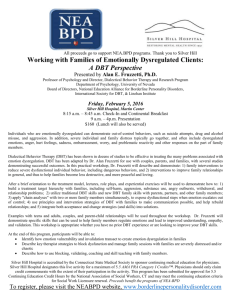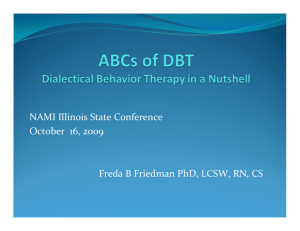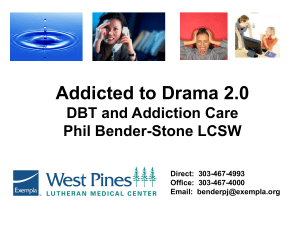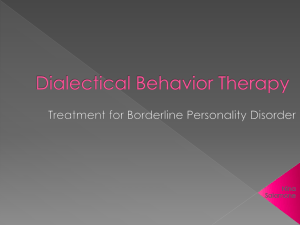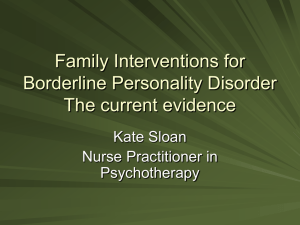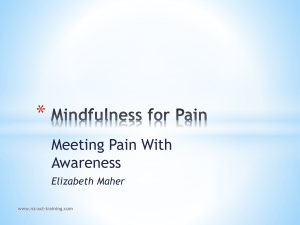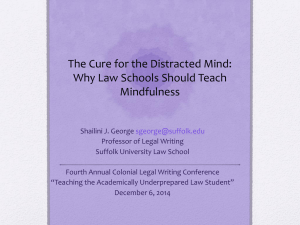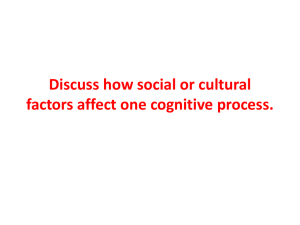ACT-ifying DBT - Joanne Steinwachs, LCSW
advertisement
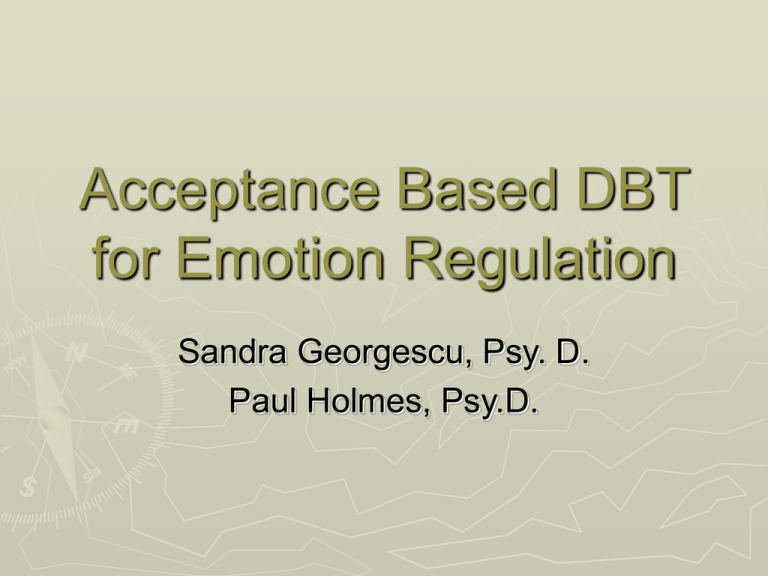
Acceptance Based DBT for Emotion Regulation Sandra Georgescu, Psy. D. Paul Holmes, Psy.D. Introduction DBT – one of the 1st CBTs to integrate acceptance/mindfulness and behavior change strategies DBT – one foot in the 2nd & another in the 3rd wave of behaviorism DBT’s leap into the 3rd wave The Field’s Timeline Hayes, (2004) DBT as Originally Packaged Intensive Outpatient Treatment involving: Individual Psychotherapy Skills Training Group Telephone Consultation Therapists’ Consultation Group Uncontrolled Ancillary Treatment Pharmacotherapy Acute Inpatient Psychiatric DBT - Stages of Treatment Pre-treatment - Commitment, Orientation & Agreement on Goals Stage I - Stability, Connectedness & Safety Stage II - Exposure & Emotional Processing of the Past Stage III - Ordinary Happiness & Unhappiness Stage IV - Capacity for Sustained Joy Stage I Targets Severe Behavioral Dyscontrol Behavioral Control Decrease control of contrived private experience 1. Life threatening behaviors 2. Therapy interfering behaviors 3. Quality of life interfering behaviors Increase Behavioral Skills } } } } Core Mindfulness Distress tolerance Emotion regulation Interpersonal Effectiveness Relationship Between Knowledge & Action Become more discriminating in our actions Knowledge Action Contact with Consequences results in refined knowledge Moving Forward Meaningless Dialectic Data on emotion and thought suppression Relational Frame Theory (RFT) – provides us with a nominalist model for understanding mind from a behavioral perspective Meaningless Dialectic in DBT ????? Mindfulness (content is not the problem, just notice) Cognitive Restructuring (content is the problem; evaluate & change it) Avoidance of Private Experience Escape from events & objects Escape from private experience Thought suppression (Marcks & Woods, 2005; Bower & Woody, 1996, Abramowitz, Tolin & Street, 2001 ) Emotion suppression (Gross & Johns, 2003; Gross, 1998; Gross & Levenson, 1997) Experiential Avoidance (Feldner, Zvolensky, Eifert & Spira, 2003; Hayes, Strosahl, Wilson, et al. 2004; Chawla & Ostafin, 2007) Relational Frame Theory (RFT) Language about mind was avoided in the 1st wave & mentallistic in the 2nd wave Rorty (1997) – when we’ve explained the use of language in society, we’ve made sense of the term “mind” RFT may have provided us us with a functional conceptualization of mind Mind is unidirectional – once you have it, you got it Acceptance Based DBT for Emotional Regulation “LIVING MEANINGFULLY” ACCEPTANCE PRIVATE EXPERIENCE BEHAV. CHANGE VALUES Implications Individual Session Cognitive restructuring strategies are replaced by: Mindfulness of thoughts, rules and stories – is this the 1st time you’ve ever had that thought Willingness to experience this thought as just that, a thought rather than whatever it may say it is (acceptance) – is it ok to have that thought given that it’s here? Functional assessment of thoughts and stories is carried out in the context of their commitment to a valued direction in life Workability of buying thoughts (short & long-term) is the measuring stick that helps inform choices Private Experience Lots of questions about it…exposure Is it ok to have that thought…. As a thought not as what it says it is? If not, more questions…. About workability, about the thought(s) in a different context….but its always the SAME thought! DBT & Values In it’s original DBT proposes “life worth living” as a direction for movement…in treatment and in life… AND No definition or process is identified for defining what “life worth living” means… Values on an individual basis Utilizing the Values Living Questionnaire, Values compass or Bulls eye to assess the direction that people want to give to their lives An anchor for commitment: conversation to be had as part of pre-treatment; beginning to define the areas that are meaningful and the directions that people would like their lives to take ACBS Values assessment tools Bullsey e Very Close close In the vicinity Far from Developed by T. Lundgren &J.A. Dahl ….and Skills Training Skill training modules renamed to reflect an acceptance/ongoing life process instead of a if/then contingency Cognitive restructuring strategies have been removed from all handouts & replaced with acceptance/mindfulness consistent interventions… extended mindfulness practice Valued Living has been added to Emotion Regulation Skill Area to help extend existing behavioral activation exercises and provide an anchor/purpose to skill use Skills Training Mindfulness Distress Tolerance Emotion Regulation Interpersonal Effectiveness Acceptance Skills Change Skills Skills Training Living in the Present (Mindfulness) Goal - to develop an unattached awareness of experience. It is training in perspective-taking. Participants are taught that one cannot control thoughts and feelings. They can only control what they attend to. Learn to be open to all things and focus only on one thing. Learn to differentiate between being lost in experience and being present in an experience. Learn to recognize and practice choosing in the gap between an urge and the action typically associated with it. Skills Training Living with Distress (Distress Tolerance) Considered more active forms of mindfulness. The DT activity becomes the focus of attention. Participants are taught to take their distressing thoughts and feelings with them as they engage in a DT skill. Learn to re-contextualizing experience. Learn to attend to the process of experiencing rather than continuously evaluating the experience. Skills Training Living with Emotions (Emotion Regulation) Emotions are adaptive Emotion is an early brain form of communication Emotion is where your language and body meet An emotion is an indicator of a specific way in which you need to take care of yourself Skills emphasize practice identifying emotion and lesson it is attempting to convey Identifying language that would help direct you towards actions that would make certain emotions more present e.g. meaning driven behavioral activation/exposure Skills Training Living with Others To live meaningfully will involve other people Practice observing your limits while honoring the limits of others Being fully present non-judgmentally, validating one’s emotions and perceptions and communicating honestly Practice making requests and saying “no”
